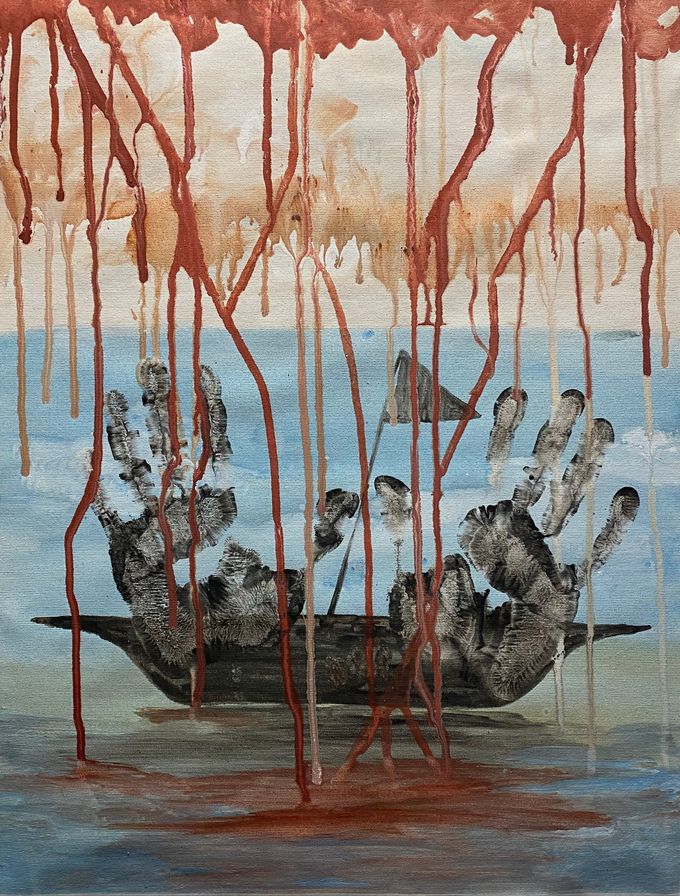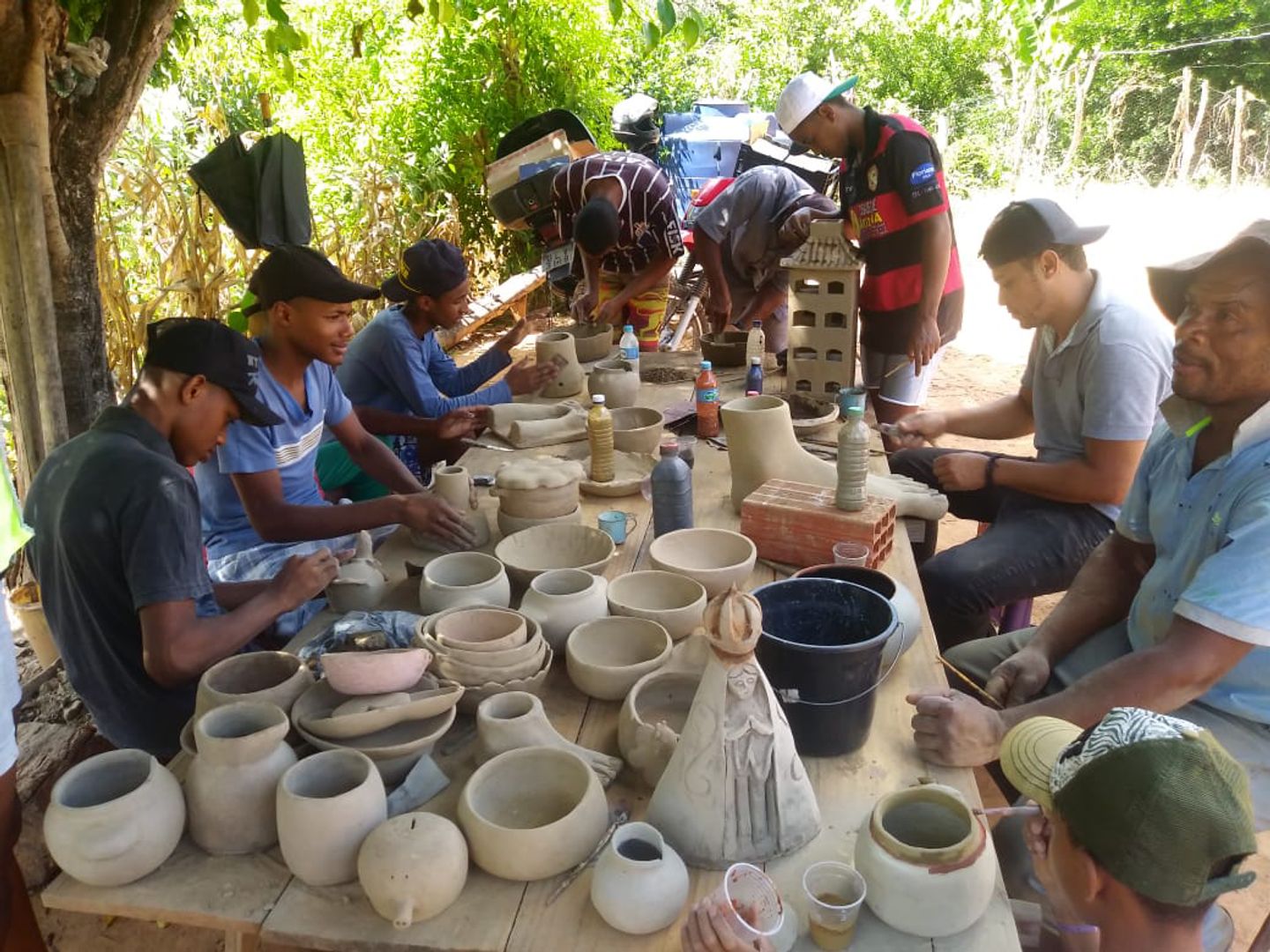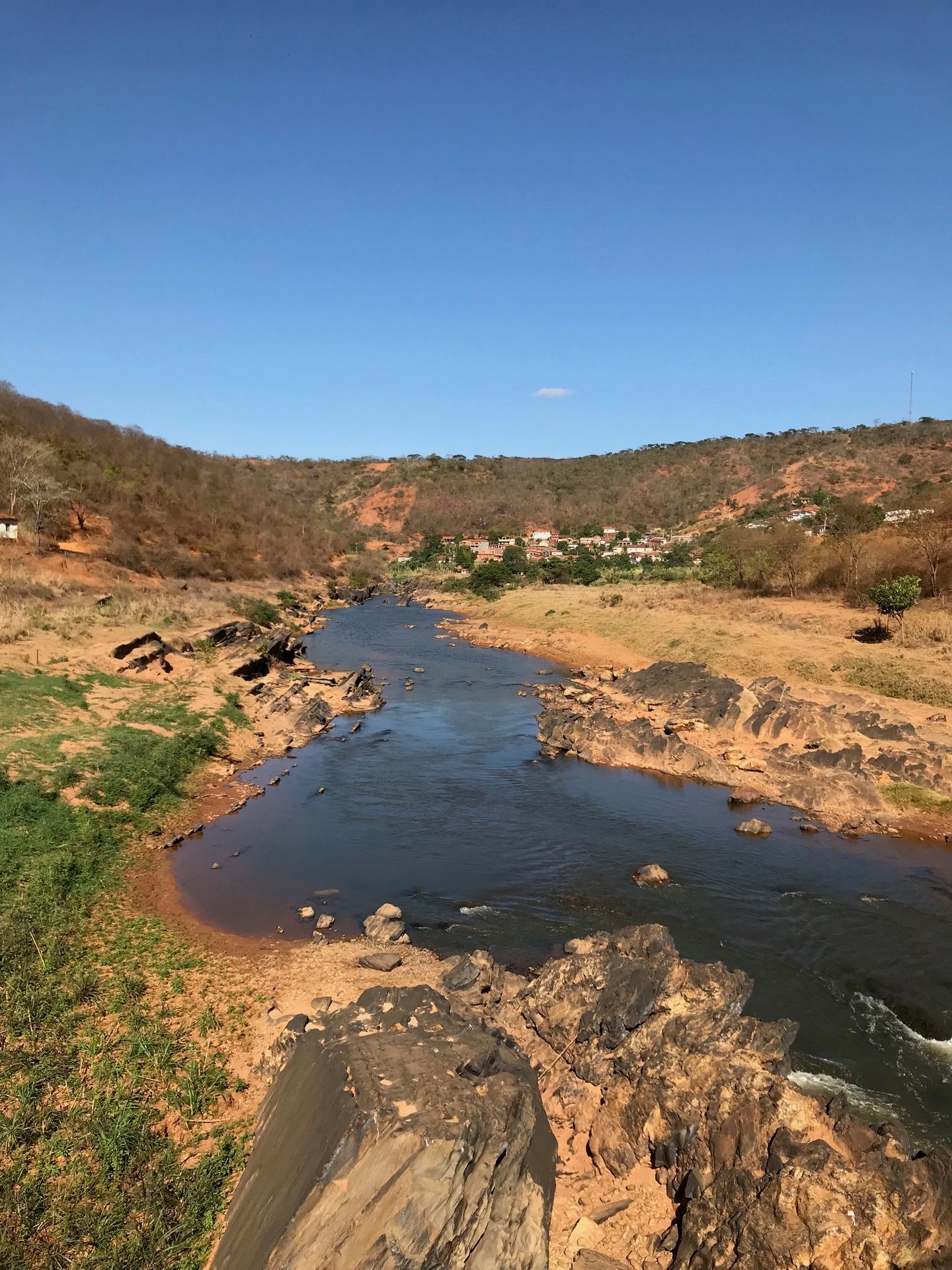
Rural Culture
Leandro Júnior (born 1984) is a figurative painter and sculptor whose artistic themes are drawn from the humble rural life in the Jequitinhonha valley of Brazil’s Minas Gerais. Known as the sertão (meaning, roughly, “back country”), it is a place of raw beauty — a land of a proud and diverse people with complex history.
Born in Cachoeira, Chapada do Norte's county, in the Jequitinhonha valley, Leandro Júnior draws inspiration from the culture and camaraderie fostered within this mountainous rural area, where the largest town contains only 7,000 inhabitants. While living in this region for 35 years, Júnior has developed his artistic method using the native clay he mines himself from the region’s steep valleys, which leads to works that echo the nature of his territorial and cultural roots (sertanejo). Whether sculpted in solid clay or painted in homemade liquefied clay on canvas, Júnior’s works explore life in the Jequitinhonha valley and its historical ancestry, which includes numerous descendants of escaped African slaves who are still living in the region’s many quilombos — communities founded by fugitive slaves.

